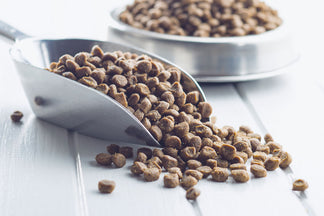In researching holistic care for cats, there are a few remedies that come up over and over again. One of these is apple cider vinegar – something I use to treat bladder infection in my own body. From what I’ve seen, apple cider vinegar is effective in treating a number of ailments in cats; bladder blockages and infections, ear infections, mange, fleas, mites, ringworm, upper respiratory problems, and more. Always dilute apple cider vinegar when using it with cats!
Important Note: If your cat is showing signs of illness, it is important to take them to your veterinarian to make sure you get a correct diagnosis. Once you know for sure what is wrong with your cat, then decide whether you will use a holistic or pharmaceutical treatment.
Using Apple Cider Vinegar Internally
When ingested, apple cider vinegar helps to create an acidic environment in the digestive tract. This breaks up bladder crystals and kills harmful bacteria. Taking apple cider vinegar internally is a remedy for bladder blockages, bladder infections, respiratory infections, and other illnesses caused by bacteria. Along with using apple cider vinegar, cats which normally eat dry food should be switched to wet food and up their moisture intake.
Adding apple cider vinegar to cat food
1/4 teaspoon Apple Cider Vinegar, 1 teaspoon chicken broth, 1 can of wet cat food
- Mix 1/4 teaspoon apple cider vinegar with 1 teaspoon of chicken broth (I’ve heard tuna juice also works)
- Add the mixture to the cat’s wet food.
- Repeat this treatment at every feeding until the cat’s symptoms improve (within a few days).
Adding apple cider vinegar to the cat’s water
2 teaspoons of Apple Cider Vinegar, 1 cup of Water
- Mix 1-2 teaspoons of apple cider vinegar with 1 cup of water
- Dip the cat’s paw into the mixture and allow them to lick it off. It isn’t necessary for the cat to drink the entire mixture. Just getting some of it in them will help.
- Repeat a few times daily until symptoms improve.
Applying Apple Cider Vinegar Topically
Parasites are not fond of apple cider vinegar’s acidity. Applying a hearty apple cider vinegar mixture to your cat topically can kill fleas, mites, and ringworm. This mixture can also clean their skin thoroughly, removing allergens that cause acne and itching. Please note: the acid in apple cider vinegar can be abrasive to a cat’s tender skin, so be sure to dilute it. Young or sensitive cats may need a more diluted mix.
Cleaning your cat’s ears
- Mix warm water and apple cider vinegar
- Dunk a paper towel in the mixture
- Squeeze out the liquid into your cat’s ear. You may want to hold another paper towel to the side of your cat’s head to keep the liquid from dripping down.
- Repeat until the ear is sufficiently clean.
Apple Cider Vinegar Mange Treatment
- Bathe the cat and use shampoo.
- Rinse using a warm water and apple cider vinegar mix.
- Towel dry the cat (make sure they stay warm).
- Gently scrub the cat’s body with a soft bristled tool, such as a toothbrush. This is to remove any of the mange you’ve just killed.
- Lather the cat with castor oil or olive oil to suffocate the mange even further.
Apple Cider Vinegar Rub
Dilute Apple Cider Vinegar with water and apply with paper towel. Use this technique to treat allergy skin, acne, fleas, and ringworm. If allergies are the problem, also try switching to ceramic or stainless steel food dishes as well as changing to a scent free/low dust cat litter.
- Mix 1 part apple cider vinegar with 1 part water (dilute this more if necessary).
- Dip a paper towel in the mixture.
- Rub the damp paper towel over your cat’s skin and fur. It is okay if they lick it off. As stated above, cats and ingest apple cider vinegar without any problems.
About the Author: Robin Mudge is the Detroit based blogger behind Playful Kitty. Animals are one of her greatest passions. Besides spending lots of time with her 2 cats (Cinco and Manna), Robin loves to learn and enjoys expressing herself artistically. This article was first posted on March 25, 2014 on Playful Kitty.


 Food
Food
 Food
Food
 Food
Food
